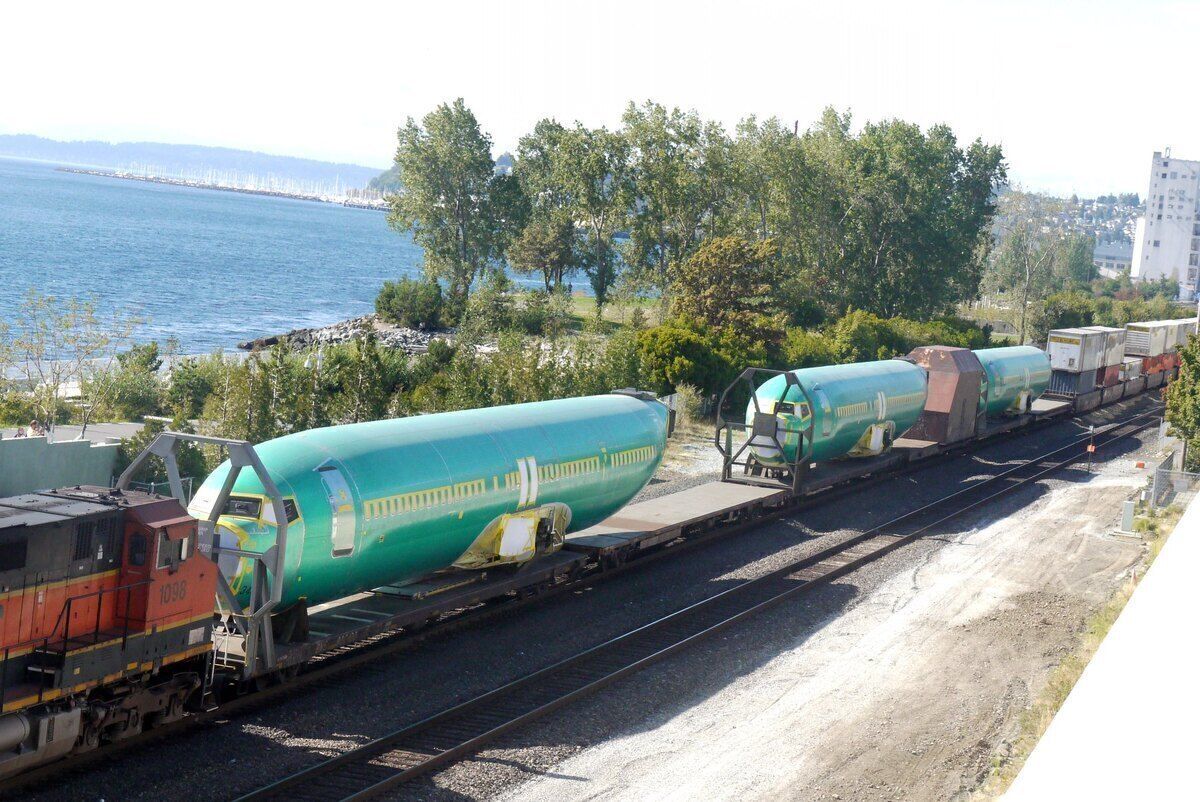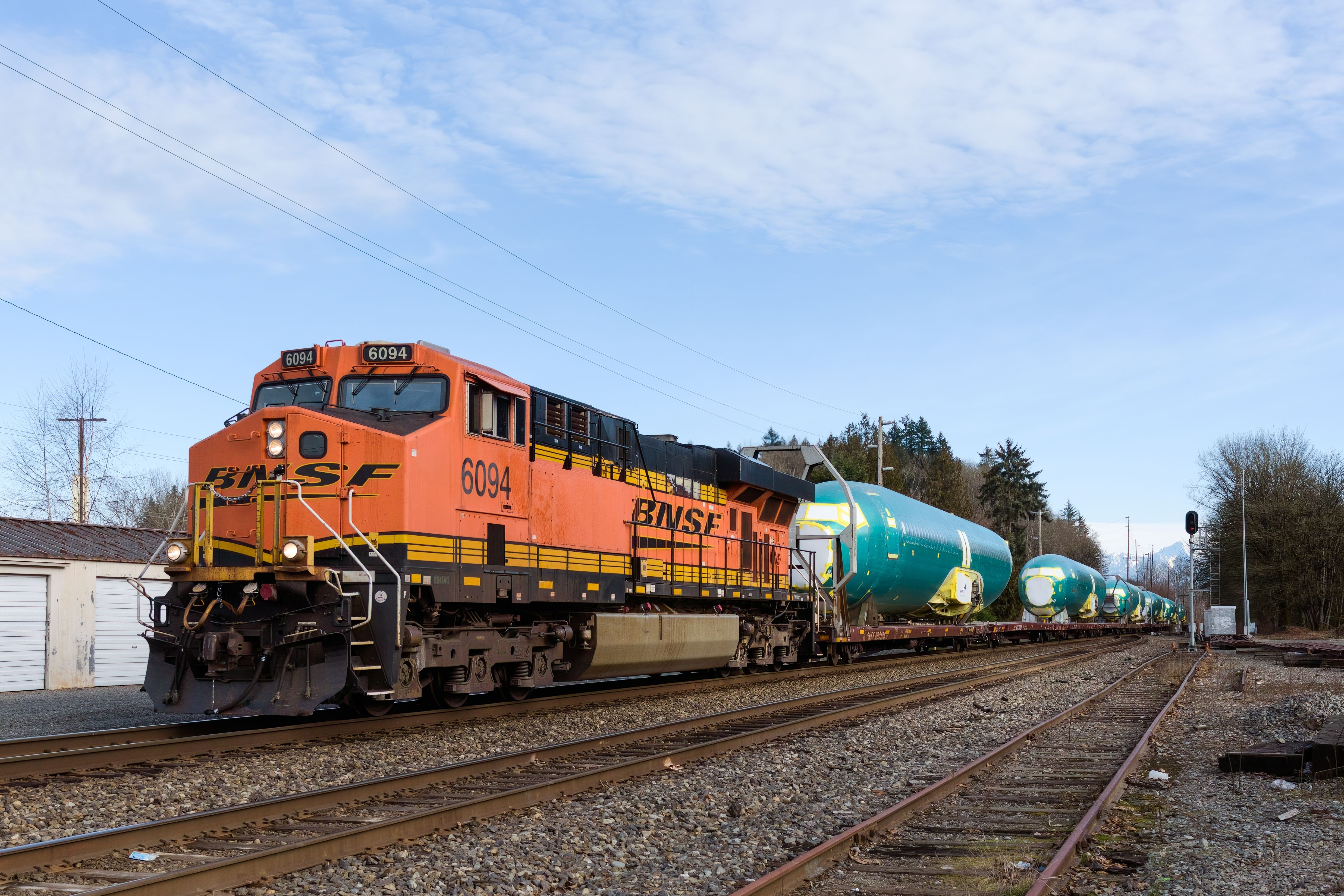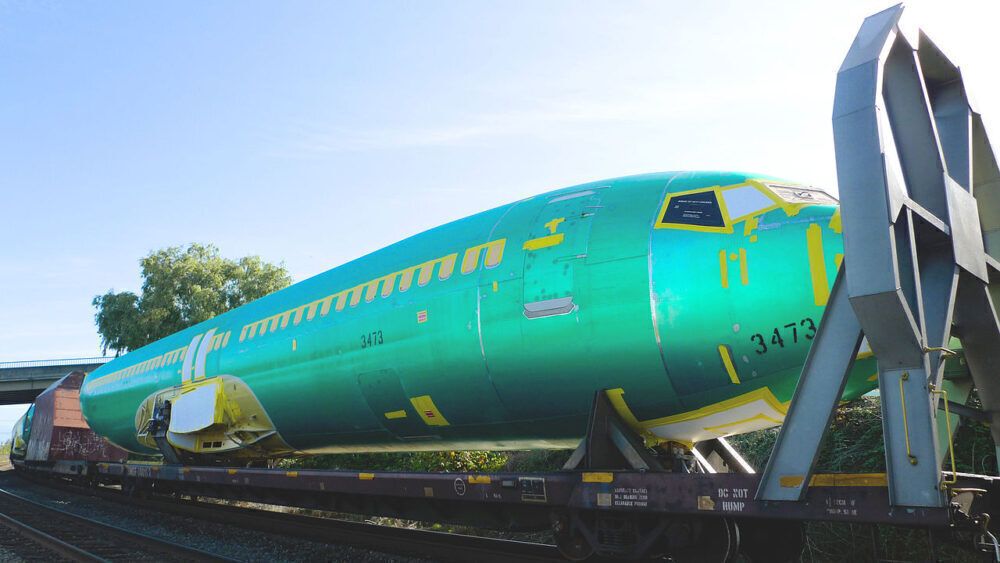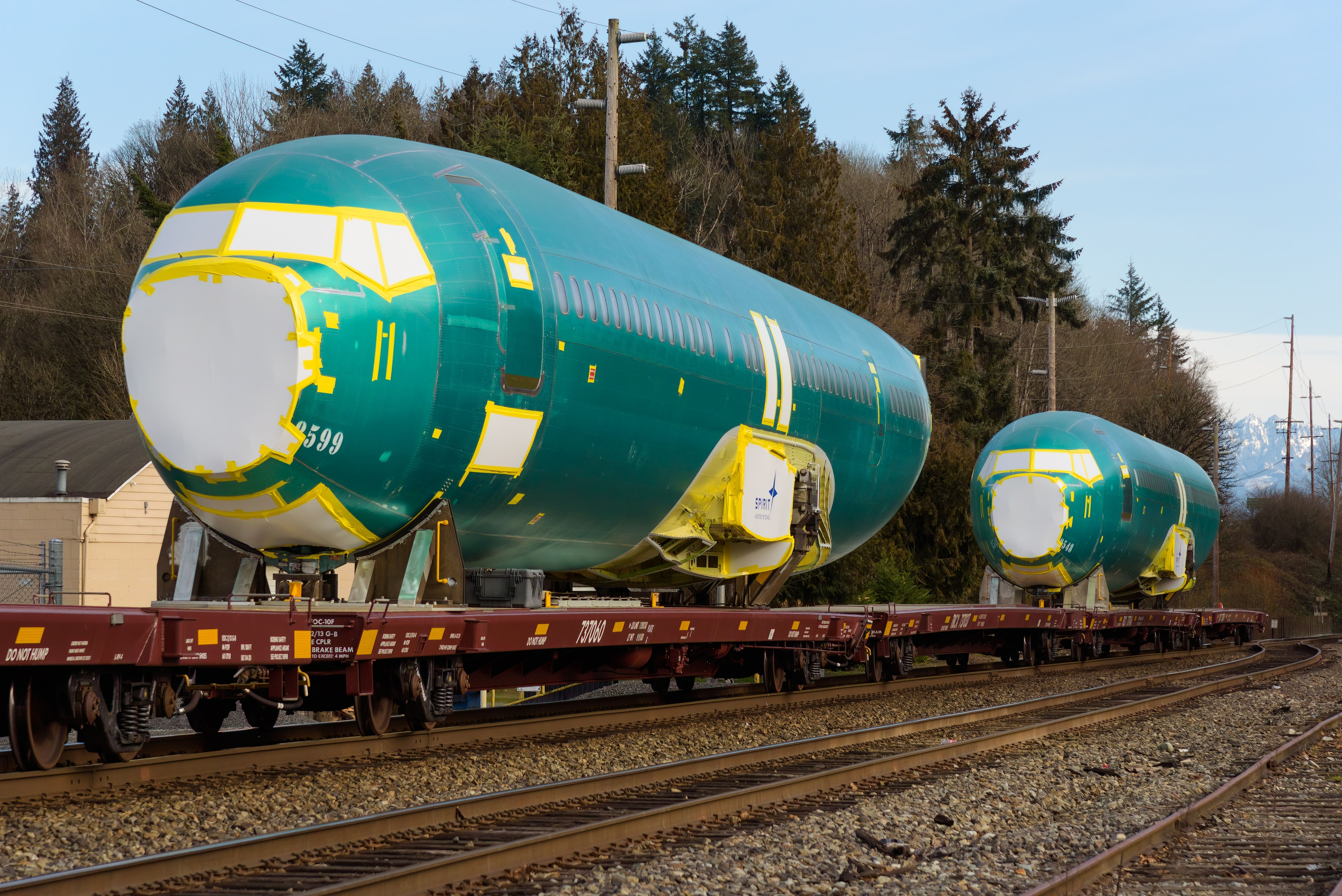In certain short-haul markets, airlines and passenger-carrying train operating companies directly compete with each other for customers. However, in other domains, the railway plays a vital role in getting commercial planes in the air in the first place. Specifically, this applies to the production of Boeing's popular 737 family, whose fuselages are transported to the factory by rail. But why is this the case?
The route
The need for the US-based manufacturing juggernaut to transport its 737 family fuselages by rail boils down to the location where they are manufactured. Specifically, this is a role fulfilled by Spirit AeroSystems, which produces the fuselages before sending them to Boeing to join the assembly line. However, Spirit is based in Wichita, Kansas, whereas Boeing's 737 factory is in Renton, Washington.
This is a distance of around 1,800 miles (2,900 km), and thus poses a logistical headache for the companies involved. Flying the fuselages inside larger cargo aircraft, such as Boeing's 747 'Dreamlifter,' would be fast, but limited in its capacity. Likewise, specialized lorries can only transport a single fuselage at a time, and this is a very slow process that would slow down the aircraft's production cycle.
Want answers to more key questions in aviation? Check out the rest of our guides here!
As such, transporting the brand-new, green-coated Boeing 737 family fuselages by rail represents the best compromise in terms of both speed and the capacity to carry more than one at a time. The fuselages make up part of a much larger freight consist, which BNSF hauls from Wichita to Renton, as seen above. By 2013, 35 fuselages a month were making this mammoth cross-country train journey.
A long history of deliveries by rail
Interestingly, the Boeing 737 series is not the only US-built commercial aircraft type for which the railway has been a crucial part of the logistical process. Indeed, Railway Age observes that Boeing has taken rail-based shipments of fuselages and other components since the 1960s, for a wide range of its airliner designs. Furthermore, the process doesn't just concern cargo from Wichita.
Indeed, as well as taking deliveries from Kansas, Boeing has also had parts shipped in by rail from facilities in the American federal state of Texas in the past. Likewise, Renton has not been the only destination for these rail-based shipments, with some also going to its factory in Everett, Washington. The diversity and longevity of this rail-based delivery program show that it is a winning formula for Boeing.
Read the latest Boeing news here!
This practice began with its four-engine 707, an aircraft that is credited for having been a key catalyst for the 20th-century jet age. Meanwhile, Boeing's larger twin-engine 777 widebody has also been the subject of such deliveries. However, the 737 has become the most common beneficiary of the service, and, in February 2018, the fuselage of its 10,000th production arrived in Renton by rail.
A derailment once led to six scrappings
All in all, the practice of transporting Boeing 737 fuselages from place to place by rail has largely proved a practical solution to the logistical reality of getting them across the country. However, an incident in 2014 caused significant problems for both Boeing and Montana Rail Link. Specifically, Reuters reports that, in July of that year, the train in question derailed near Superior, Montana.
This somewhat alarming incident saw 19 of the train's 90 freight cars (21% of the consist) come off the tracks, including three that were carrying 737 fuselages. The location of the derailment spelled was particularly inconvenient, as it took place at the top of a riverbank. This caused some of the fuselages to slide down the bank and into the Clark Fork River. Thankfully, no one was injured in the incident.
However, the fuselages were not quite so fortunate, and they sustained significant damage as a result. Indeed, one of them even broke in two due to the damage from the derailment. As such, they had to be scrapped by the end of the month, according to The Seattle Times. Boeing was producing 42 737s a month at the time, meaning that the incident wiped out around 14% of its capacity for July 2014.
Did you know that Boeing 737 fuselages arrive at the factory by rail? Perhaps you've even seen one of these special trains on your travels? Let us know your thoughts and experiences in the comments.
Sources: Railway Age, Reuters, The Seattle Times





